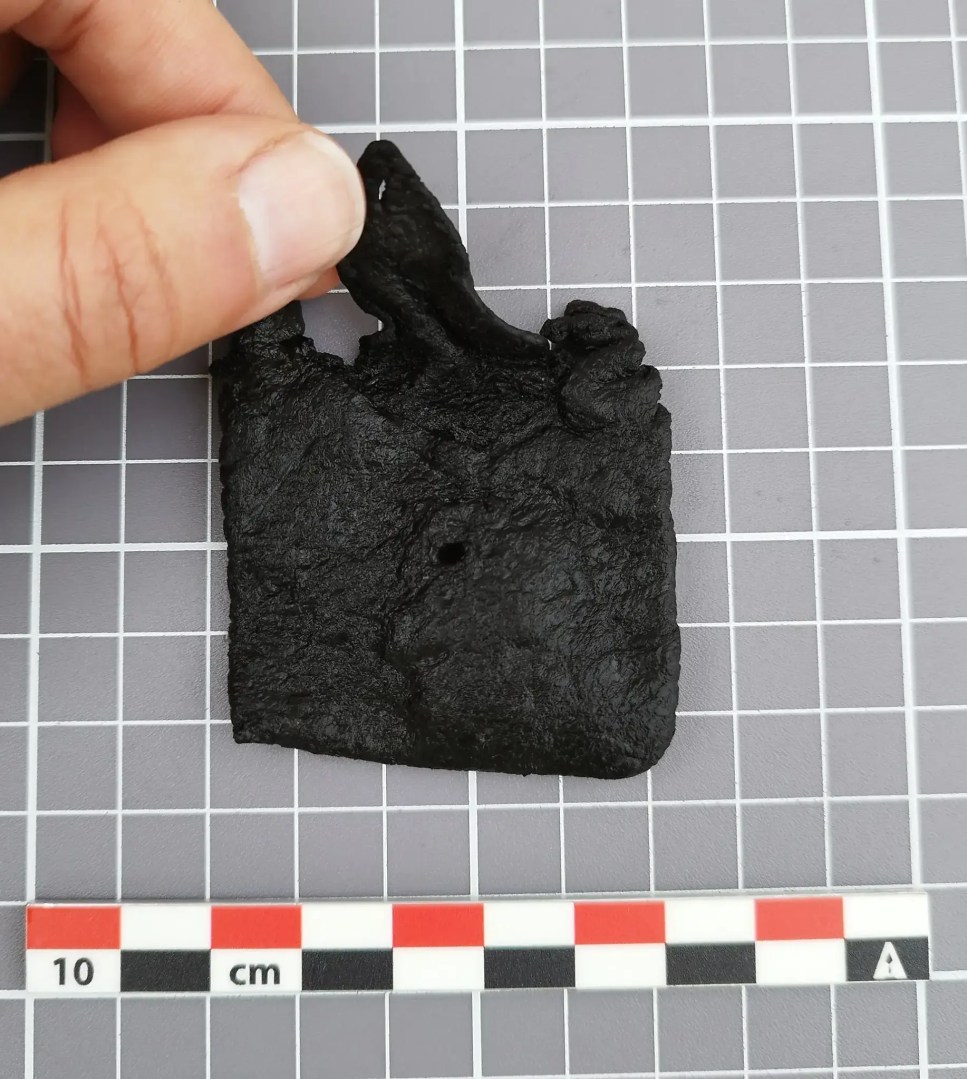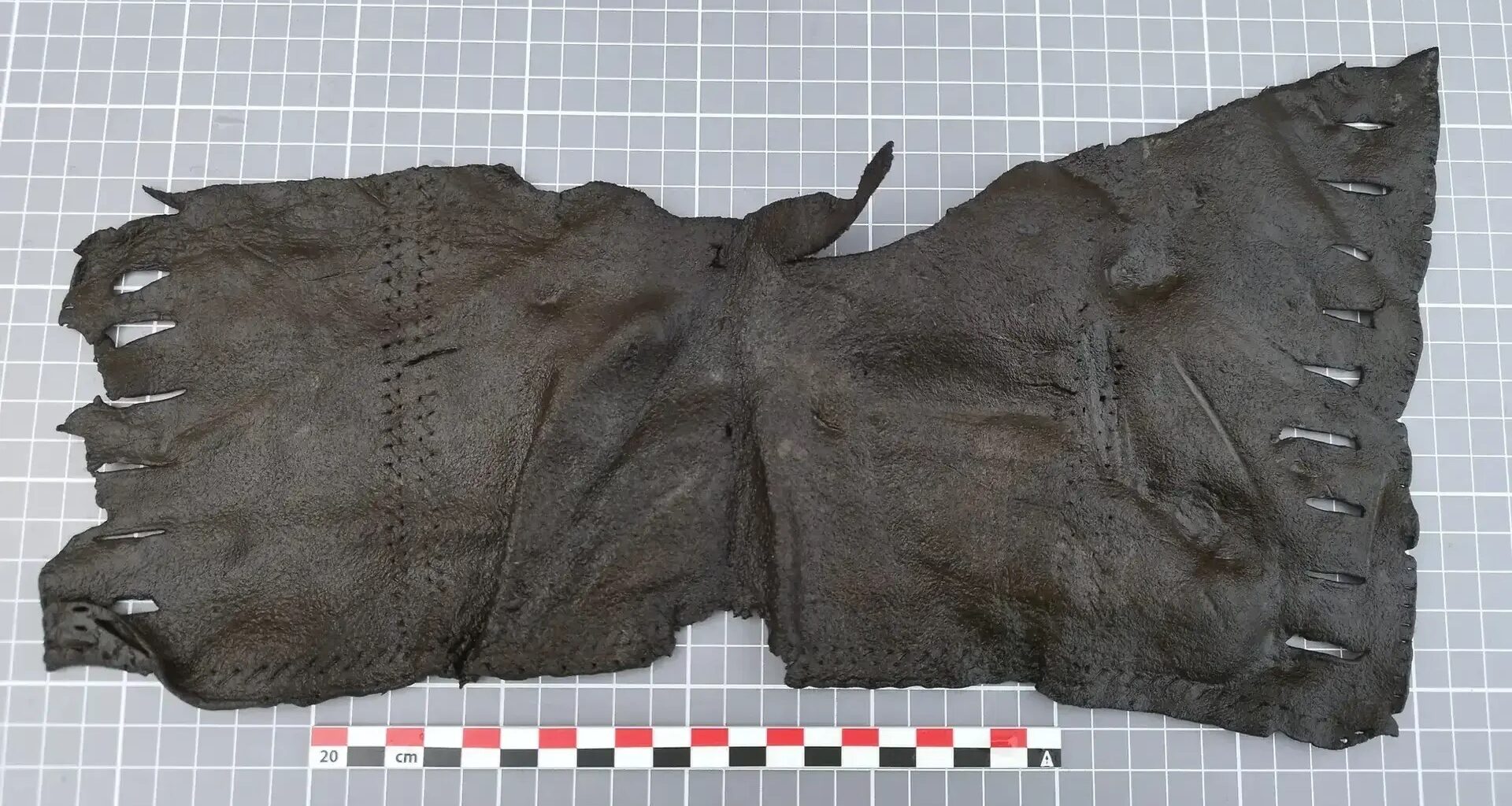Archaeologists from the Norwegian Maritime Museum uncovered thousands of remarkably well-preserved leather goods, providing an unusual snapshot of life in medieval Norway.
In Oslo’s historic neighborhood of Bjørvika, archaeologists stumbled upon an unexpected find while excavating the site of a future school. They found many leather shoes from the Medieval period that were akin to striking gold, but in this case, leather.
Showcasing a stunning degree of variety—tall boots, low-cut shoes, and even children’s shoes—the patterns on them and evidence of repair provided archaeologists with “a Middle Age-footprint” that spanned social classes.
Alongside these necessities, as all Medieval Norwegians notably and exclusively walked, thus needed shoes, archaeologists also uncovered unique purses, bags, and sword and knife sheaths.
Though they cannot determine how this lot of leather goods came to be disposed of, they provided a fascinating and unusual snapshot of life during the 13th and 14th centuries in Norway, a time of growth and trade connections.
 Mini leather bag. A fold and small loops at the top are visible, so it probably hanged off a string or belt. Photo by Kirstine Møller Gray, NMM.
Mini leather bag. A fold and small loops at the top are visible, so it probably hanged off a string or belt. Photo by Kirstine Møller Gray, NMM.
That’s a lot of leather
“Today, we rarely leave the house without a bag, sack, or wallet. It was the same in the Middle Ages,” the Norwegian Maritime Museum wrote in a press release.
Archaeologists were exploring an old harbor in the historic district of Oslo when they discovered thousands of pieces of waterlogged leather, right before a new school was to be built on top of the remarkable and unusual treasure.
“These objects were buried in thick, waterlogged clay lacking oxygen, so they are extremely well preserved,” Head archaeologist Marja-Liisa Petrelius Grue told Science Norway. “That has made it possible to find shoes and bags that would otherwise have rotted away long ago.”
Thus far, they have registered 2500 objects, most of which are leather goods such as bags, purses, and shoes.
The bags were made of tanned leather, some from goat or calfskin. Cut and sewn by hand, with holes for cords or buckles, some might have been decorated or adorned with badges. Exhibiting a range of styles—from simple designs to more elaborate models featuring embossed patterns or embroidery—the bags, much like today, indicated one’s status and wealth. They were handmade, however, they demonstrated a remarkable degree of variety.
Most of which were shoes
Archaeologists report that they’ve recovered 227 leather shoes thus far. They expect they will catalogue more than 1,000. They showed an equally impressive range in design as the bags with wear and tear.
Grue continued to Science Norway that they could see that “…they’ve developed holes, and that these have been repaired in various ways,” “We see the entire life cycle of the shoe.”
As a “footprint” from the Middle Ages, the shoes are “a tangible trace of someone who lived, walked, and had a life in this city,” Grue continues.
Forty of the shoes belonged to children, which archaeologists pointed out were “an especially valuable find,” according to Grue.
“We don’t often find traces of children in archaeology, so this is especially fun.” And it seems that their parents expended extra time and resources to ensure their kids had good shoes to wear.
“They’re very cute. We can see that some of them were used by many. They’ve been repaired many times, adjusted, and redecorated,” she said.
“Even though only the pieces of leather remain today, it is precisely these fragments that give us insight into how people organized their everyday lives – and what they valued,” the press release concludes.
